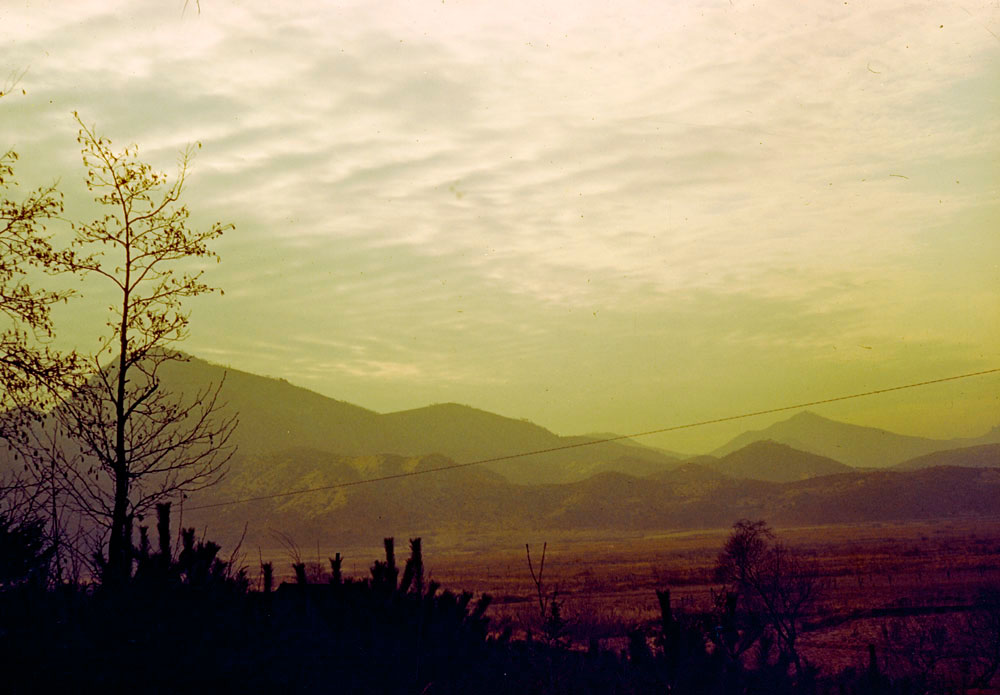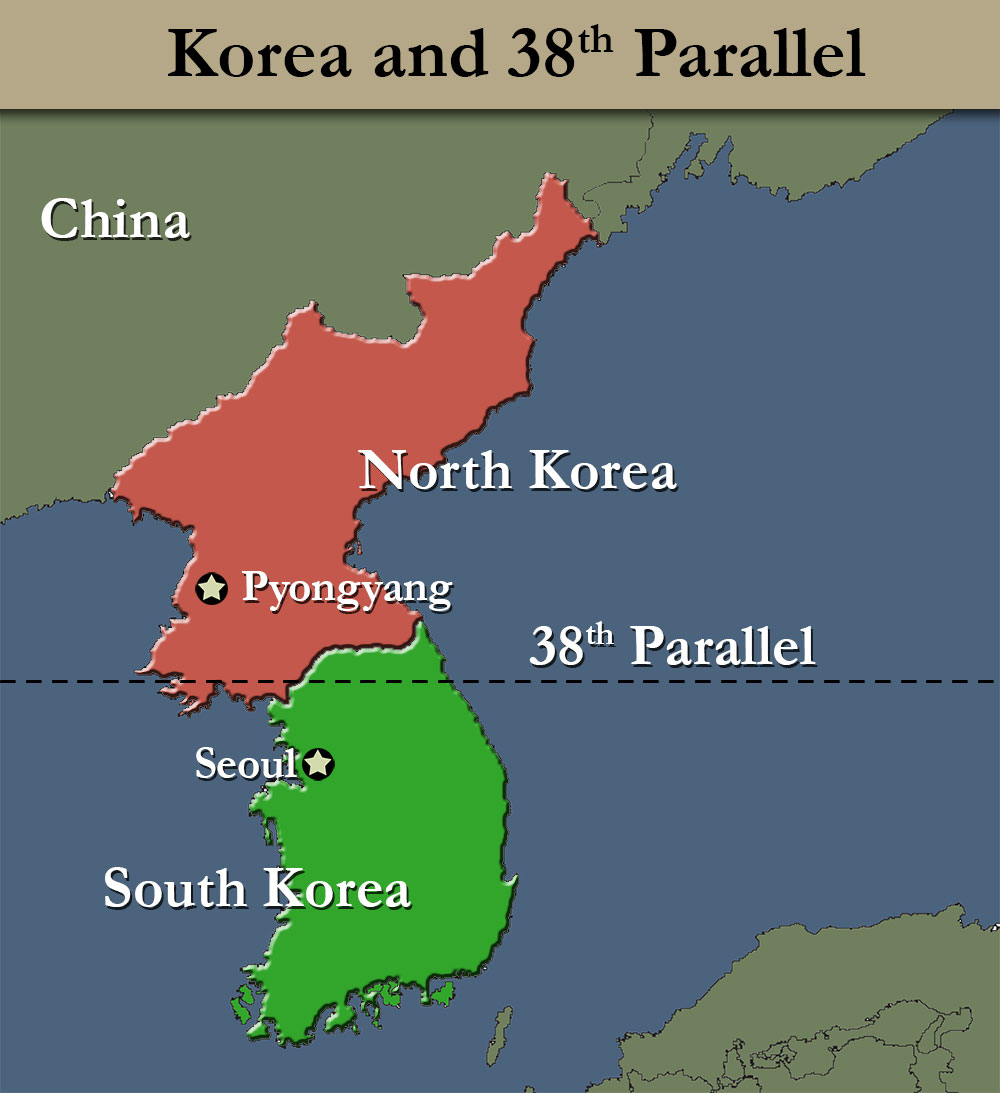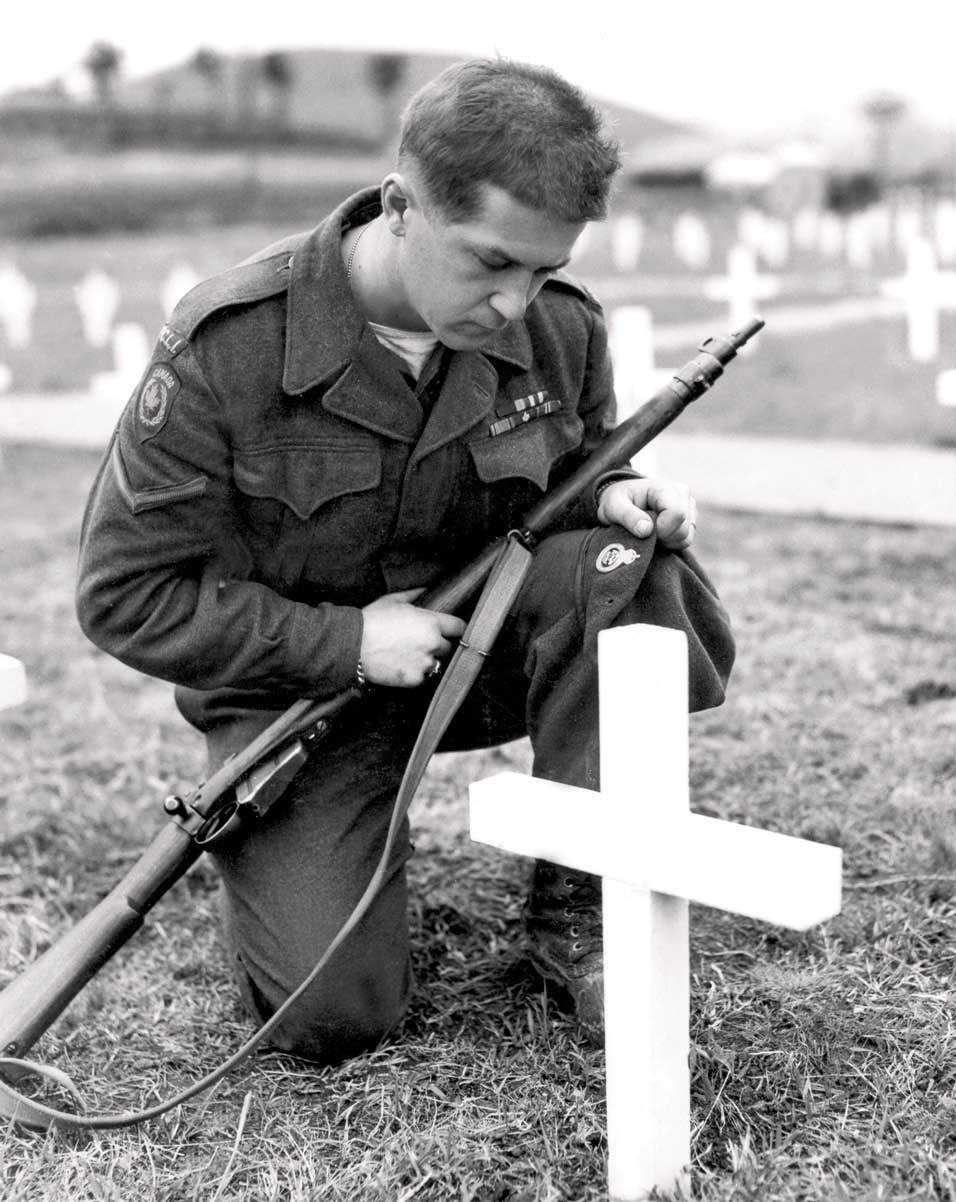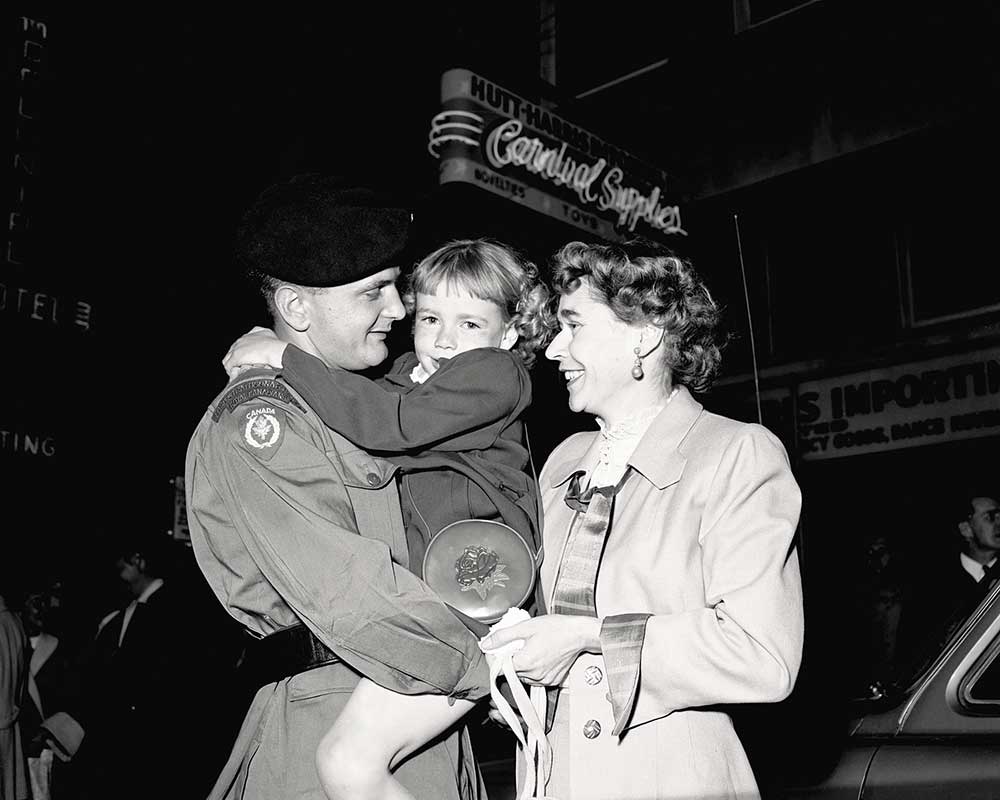Land of the Morning Calm and the Fragility of Peace
This publication is available upon request in alternate formats. PDF Version
Land of the Morning Calm
This is an image of the lovely landscape of Korea. It is a place of great natural beauty, featuring stunning mountains, clear waters and serene countryside. Indeed, its tranquil scenery has led to Korea being traditionally known as the “Land of Morning Calm.”
Korea Divided in Two
While the landscape of Korea is beautiful and calm, the people living there have not always known peace. In fact, maintaining peace still takes a lot of work.
At the end of the Second World War, Korea was divided in two. North Korea (shown in red on the map) was controlled by a country called the Soviet Union (now known as Russia). The United States’ military was in South Korea (shown in green on the map). The Soviet Union and the United States did not agree on how the two Koreas should be governed. By 1948, neither side was willing to cooperate with the other, and North and South Korea ended up having two different types of government. They “divided” the land along what is called the 38th Parallel. This is not an actual physical barrier like a fence or a wall, but it is a line of latitude dividing the two countries (see the dotted line on the map).
Land of the Morning Calm Shattered
On the morning of June 25, 1950, the Land of the Morning Calm was shattered by the sounds of bombs exploding. North Korea had attacked South Korea. The Canadian government reacted quickly and sent soldiers on ships to Korea to help the South Koreans. The Canadians who went to fight believed that all Koreans had the right to live in peace and freedom. They believed that these rights were in danger when North Korea invaded South Korea, and they believed that these rights were worth fighting for.
The war was hard and fighting continued for almost three years. It ended with an agreement called an armistice, which meant that both sides would stop firing their guns, but that didn’t officially end the war.
South Koreans were able to keep their own culture and their freedoms. North Korea chose a different type of government called a dictatorship. North and South Koreas remain divided to this day.
Consequences of the Korean War
There are many consequences of war, and there are no real winners.
The people who lived in Korea throughout the war suffered many hardships. With war raging across their country, no place was safe. Some families actually had to leave their homes when armies came near. Houses, personal belongings, schools and hospitals were damaged. Farms and crops such as rice paddies (which were an important part of their economy) were trampled on and animals were stolen. Sadly, some Korean people were wounded and some of them died. Some families were split up and not allowed to see one another.
Life was difficult for Canadian soldiers as well. They lived outdoors much of the time and the weather was severe. In the summer, they experienced very hot temperatures and sometimes torrential rainfalls called monsoons. They spent nights in trenches filled with water and boots covered in mud. In the winter they had extremely cold temperatures, much like a Canadian winter. Some soldiers suffered from frostbite. Soldiers also had to deal with the difficult Korean mountainous terrain. It was hard to carry their equipment up and down those mountains. And they had a lot of equipment! A Canadian infantryman carried 100 rounds of ammunition (that would be like carrying around a very heavy shoe box!), three grenades and a shovel. A soldier’s kit also contained a water bottle and food rations for 24 hours, socks and a sweater. They had heavy packs! It wasn’t easy on the home front back in Canada. Many soldiers had families back at home that were anxiously waiting for their return. After three years of fighting, many soldiers did return home to their loved ones in Canada. Unfortunately, 516 Canadians died in service during the Korean War and, sadly, never saw their families again.
Peace and Freedom
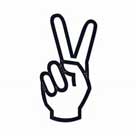 Peace is fragile. While the Korean War Armistice was signed on July 27, 1953, it is still not quite peaceful, and people there are still worried about war. It is hard to work toward peace. It is important to cooperate, listen to others, and show respect. You also have to consider people’s rights. Did you know that every person in the world has rights, including kids? You have rights like:
Peace is fragile. While the Korean War Armistice was signed on July 27, 1953, it is still not quite peaceful, and people there are still worried about war. It is hard to work toward peace. It is important to cooperate, listen to others, and show respect. You also have to consider people’s rights. Did you know that every person in the world has rights, including kids? You have rights like:
- the right to privacy,
- the right to education ,
- the right to practice your own culture,
- the right to health care,
- the right to give your opinion, and
- the right to food, clothing and a safe place to live.
It’s called the Conventions on the Rights of the Child!
If you knew that there were people or kids like you in another country whose rights were threatened, would you want to help them? Would you support sending soldiers to help them? What about in your own classroom or community?
Peace is fragile. It takes a lot of effort. We should never take peace for granted.
- Date modified:
